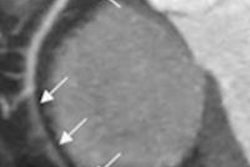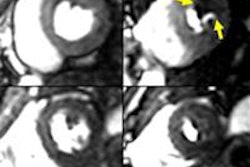Volumetry of lung nodules is critical for patient management in CT lung cancer screening, and like everything else in radiology, there is increasing interest in cutting radiation dose as much as possible while maintaining reasonable accuracy. Because volumetry of lung nodules determines patient management, it needs to be accurate.
Nodules of three density types ranging from 5 mm to 12 mm in diameter were attached to the phantom lung vasculature or mediastinum for an extra challenge. They were scanned using 320-detector-row CT and four protocols with different tube current settings from 80 mA down to 10 mA.
The use of advanced iterative reconstruction significantly reduced interscan variability in the nodule analysis, according to the researchers, and it enabled 3D volumetry of the synthetic lung nodules with reduced absolute biases on low- and ultralow-dose CT.
"Our results imply that, given the latest reconstruction algorithms such as [adaptive iterative dose reduction (AIDR) 3D], the use of ultralow-dose CT for this application has become a real possibility," Dr. Sumiaki Matsumoto, PhD, told AuntMinnie.com.



















